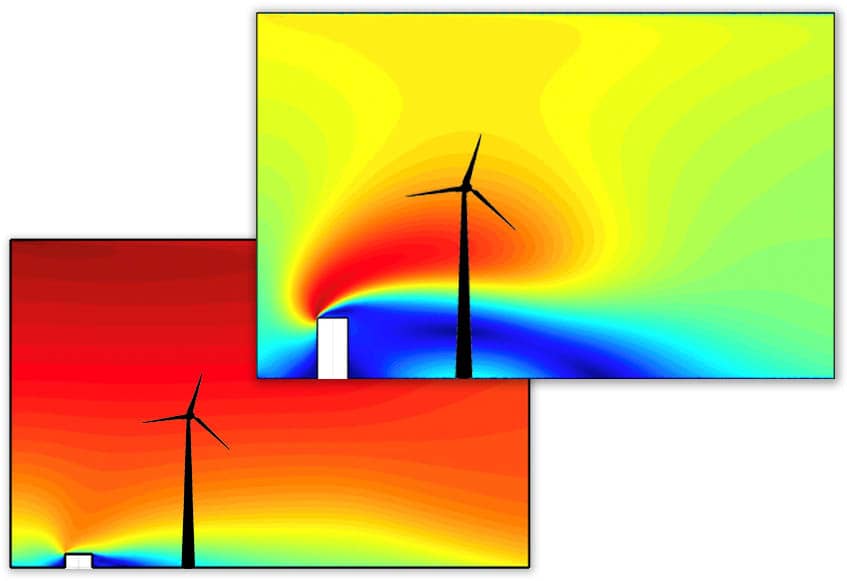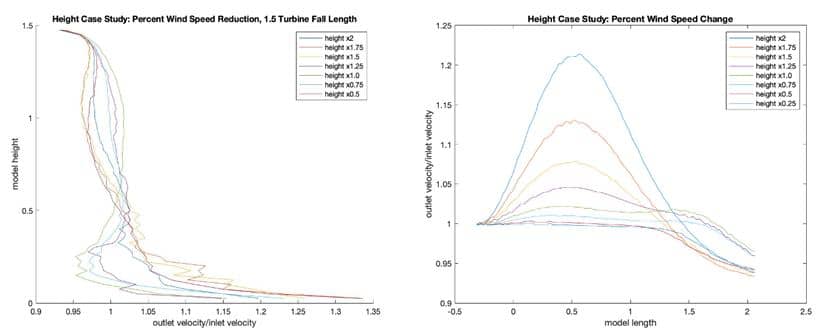Renewable energy such as solar and wind power is becoming increasingly important in reducing effects of global warming. The One Energy wind power company installs wind turbines on local properties instead of dedicated wind farms, in which case there are no industry standards how small single obstructions, such as from close by buildings, can impact the wind flow. The following study was therefore performed by a team at Loyola University in order to develop a new method to model wind flow around single small obstructions to aid in local wind turbine placement decisions.

The study employed the easy to use OpenFOAM GUI and CFD solver integration with FEATool Multiphysics to perform a parametric study of several obstacle configurations and analyze the resulting turbulent flow field. Simulations were compared and validated against the older Perera Obstacle model and experimental CEDVAL wind tunnel data. The results of the obstruction height case study can be seen in the figure below.
At lower heights, the wind velocity was slowed down by the obstruction but at heights above the obstruction the wind stream returned close to the free stream velocity. The length of the obstruction affects the wind velocity at lower and higher altitudes, but around height of the hub there was no significant decrease in wind velocity. The simulation model and data can now be used to help and optimize placement of local wind turbines.

References
- Favuzzi S. et al. Modeling Wind Flow Around Single Obstructions to Aid in Wind Turbine Placement Decisions, Engineering Science Capstone Design Project Presentation, Loyola University, 2020.